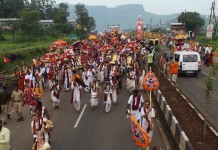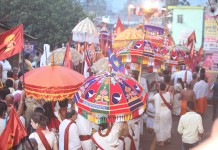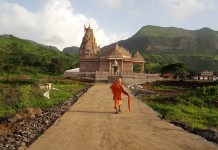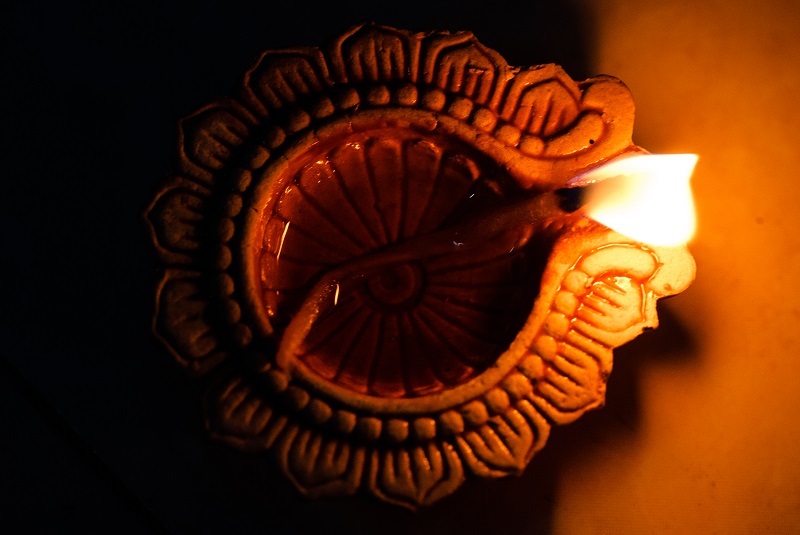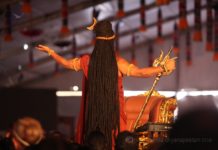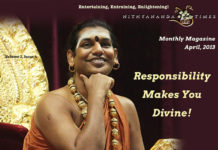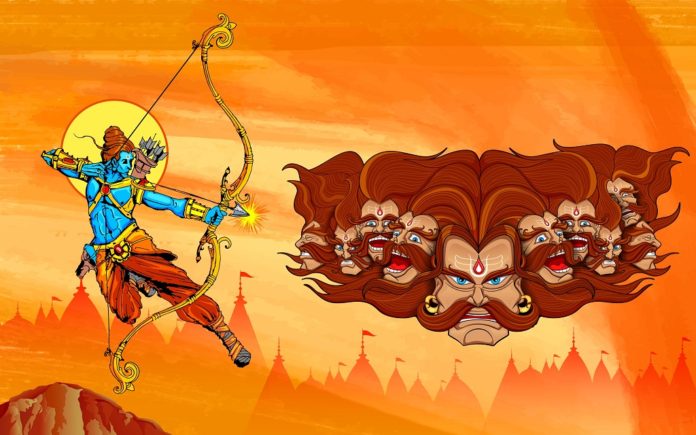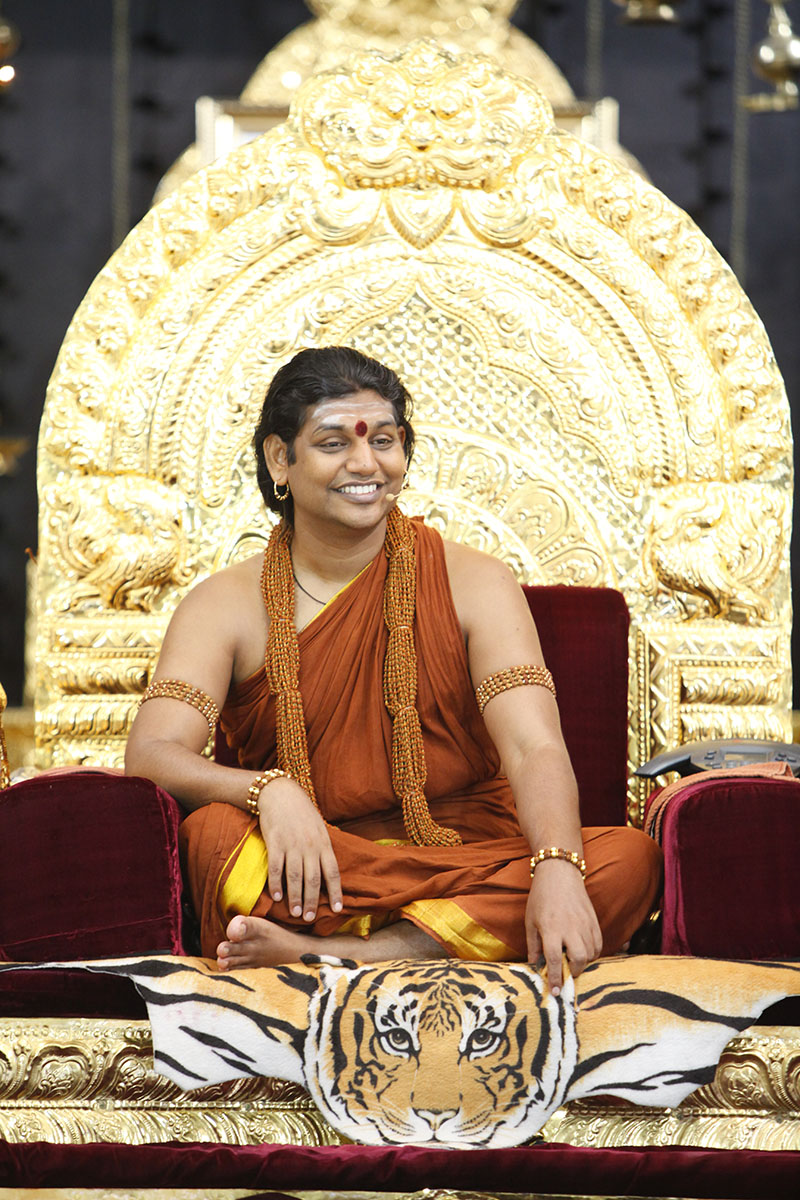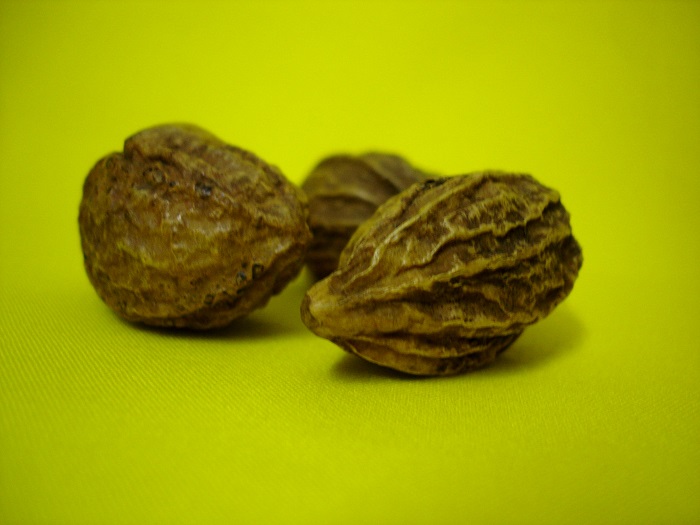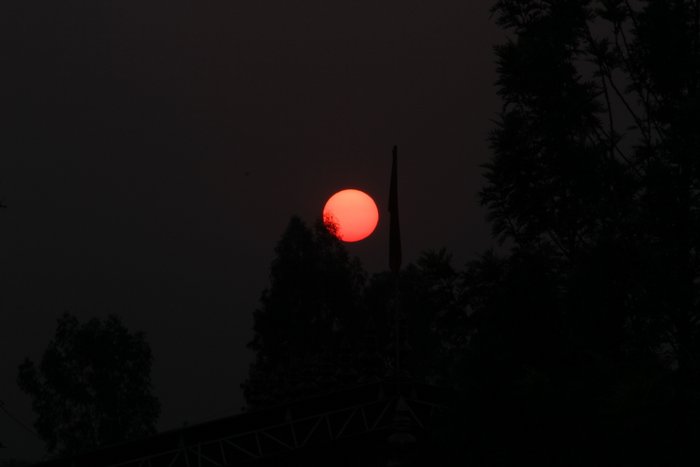Ramayana is the story of the dharma yuddha (righteous war) fought between Sri Ram, incarnation of Vishnu, and Ravana, the great asura (demon) king of Lanka. Ravana was a great devotee of Shiva, but got stuck in his arrogance and ignorance, leading to a hunger for power. He conquered many kingdoms and even threatened the devas (gods) in svarga loka. Intoxicated with power, he captured Sri Ram’s wife Sita to make her his queen. Sri Ram waged war on Ravana to rescue Sita with the help of an army of monkeys.
Sri Ram was a skilled archer and by the tenth day of the war, Sri Ram’s army had slain all the great warriors in Ravana’s army, leaving Sri Ram and Ravana embroiled in battle. Slaying Ravana was all that remained to win the war.
Ravana, the Power Hungry King
Ravana, who was pronounced as one of his greatest devotees by Shiva himself, had performed severe penance for several thousand of years. He had cut off all his nine heads and offered them as oblation in the fire of the yajna (sacred fire) to Shiva. Just when he was about to cut off his tenth head, Shiva appeared and asked Ravana what boons he wanted. Always seeking immortality and power, Ravana asked for Shiva’s atma linga, which is the very soul of Shiva. Shiva granted the boon on the condition that the atma linga should never be kept on the ground, else it would remain where it was placed. Shiva, who is omniscient, knew that Ravana was seeking the boon with the intention of conquering the whole world, rather than for his spiritual growth. With the granting of the boon, Ravana also got the initiation into ananda gandha by Shiva himself as Guru. The gods were afraid that Ravana would now be invincible and would misuse his powers to satisfy his own desires at the cost of others’ peace. To solve the problem, Ganesha, the son of Shiva came to their rescue. Ganesha tricked Ravana into placing the atma linga on the ground, thus fooling Ravana and taking the boon away from him.
Inspite of having Shiva as Guru and having Shiva’s atma linga as a boon, Ravana only focussed on amassing material objects and powers, rather than seeking enlightenment itself. With this decision, Ravana started his journey towards ignorance and illusion. He lived in the false illusion that he was immortal.
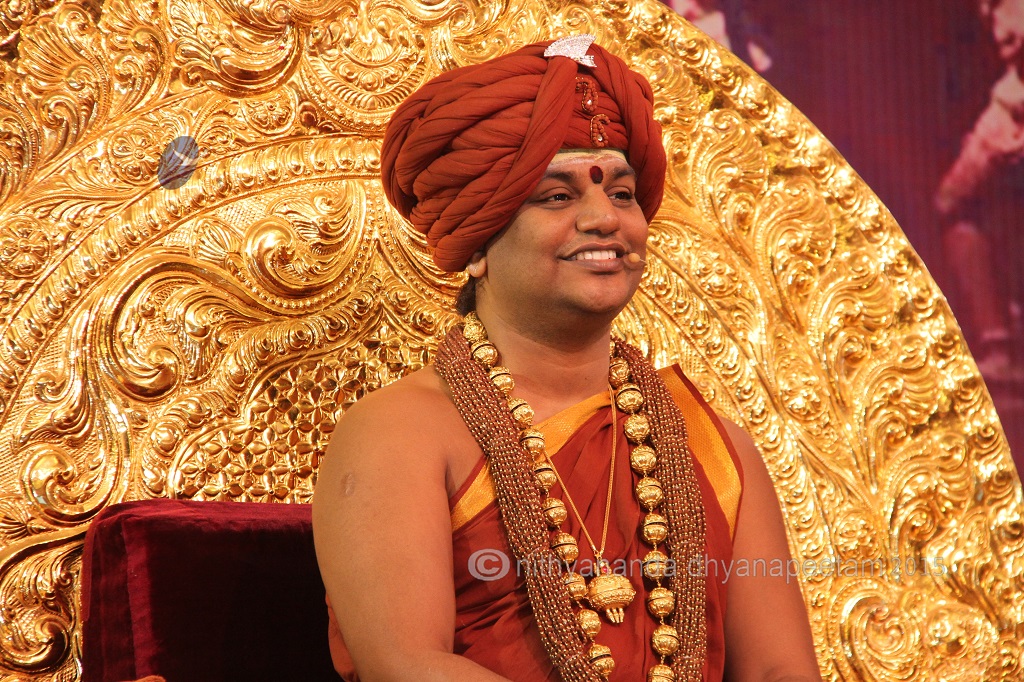
Ravana Appears to Succeed in Battle
On the last day of the battle, Sri Ram, who was Vishnu incarnate, started shooting arrows at Ravana and severing his head. Every time he severed a head, a new one took its place. Tireless, Sri Ram kept on aiming at Ravana, and releasing his amogha (one which does not miss its target) arrows. After shooting hundred arrows, even Sri Ram began to wonder why he was not being able to slay Ravana, who was now laughing at Sri Ram. The same arrows had slain Khar, Dushan and many other powerful asuras (demons).
As per a reference from Valmiki’s Ramayana (Verses 59, 60, 61, Sarga 107, Yuddha Kaand):
Na chaaiv Ravanasyaanto drishyate jeevitkshaye
tatah sarvaastravidveerah karusalyaanandvardhanah
maarganaibahubhiryuktah chantayamaas raghavah
Maareechonihato yaistu kharo yaistu sadooshanah
krounchaavane viraghastu kabando dandake vane
yaih saala girayo bhagna vaali cha kshubhito ambudhih
ta ime sayakah sarve yuddhe praatya yika mam
kim nu tatakaranam yen ravane mandtejasah
Translation: Yet, no certainty about Ravana’s death could be seen. Thought equipped with many arrows and well-versed with all kinds of missiles, the valiant Ram, the augmentor of Kausalya’s joy, then became thoughtful (said to himself as follows): “What is the reason, these arrows by which Mareecha, Khara, Dushana, Kabandha in Kroucha-forest, and Viradha in Dandaka-forest were killed, by which seven Sala trees and the mountains were burst, by which Vali was killed and the ocean shaken up; all these arrows which provided immediate succour to me in battle, have proved of little efficacy in the case of Ravana.”
The End of Sri Ram’s Dilemma
Seeing Sri Ram thus lost in thought, his charioteer Mitali refreshed his memory, and said to him, “O valiant one, why do you pretend as if you don’t know how to end him? Release the Brahmastra and liberate us all from evil, the time has come.”
With this, Sri Ram released the Brahmastra on Ravana’s ananda gandha. This destroyed the amrit kalasha (pot of nectar) of the boons granted to him, bringing Ravana down to the ground. In his dying moments, Ravana realized that Sri Ram is none other than Vishnu himself and sought his forgiveness.
The Distraction of the Perishables
The episode of slaying of Ravana has great significance for a spiritual seeker. Ravana signifies the intoxication with material objects that takes over a person, destroying their seeking. As Sri Ram tried to destroy Ravana, he was faced with the many heads of Ravana that kept appearing incessantly. This is much like the many thought trends we entertain. When we discard one thought current, another one takes its place. This incessant struggle goes on until we are reminded that the only solution to this inner war is to drop the very act of creating thought currents. The sangha, or the people we surround ourselves with, are the ones who can fulfill the task of reminding us of our true purpose; this is why it is important to live in the sangha of those who are in the pursuit of enlightenment. When all the thoughts are surrendered into the ananda gandha, the final liberation from all illusion becomes a reality.
Diwali signifies this surrender to the super consciousness, the end of illusion of the mind, and the homecoming of the seeker to realize the true purpose of his life, which is realizing the Ultimate.

